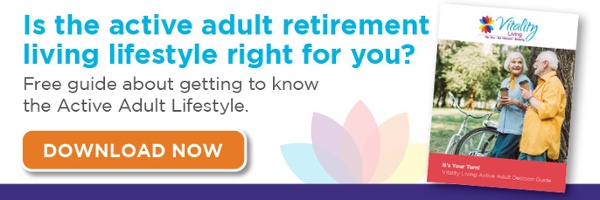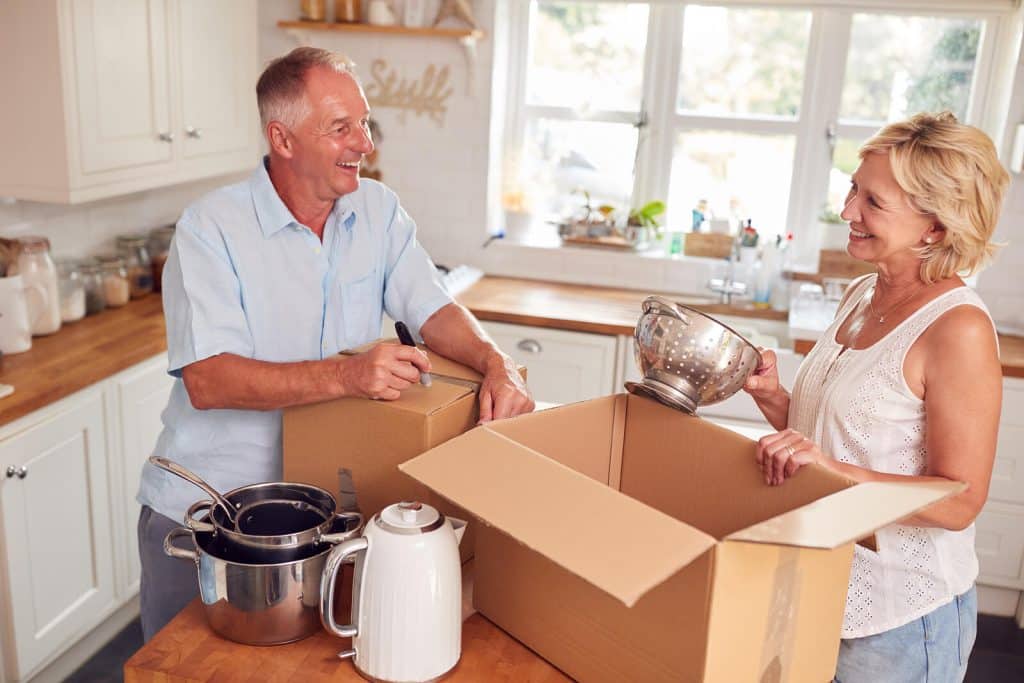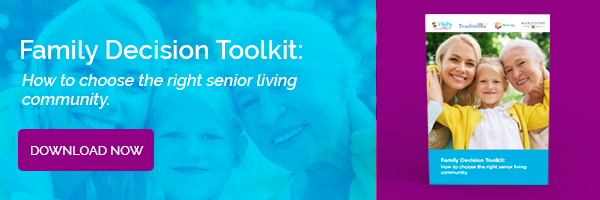In retirement, less really can give you more, especially when you downsize to an active adult retirement community. It’s true! You’ll enjoy more independence, a more active lifestyle, more amenities, and definitely more fun because you have less ‘stuff’ to clutter up your days like home maintenance, lawn care, and housekeeping. If you’re still worried about the hassle of the move itself: don’t be. These downsizing tips can help your move go much more smoothly.

5 Downsizing Tips
It goes without saying that downsizing is a big task. Most of us have much more than we really need. By taking it one step (or tip in this case) at a time, the process is much more manageable.
Tip 1 – Take it room by room – Identify a date when your downsizing should be complete, then stop thinking big picture after that. Instead, focus on one room at a time. If that’s too much, start with one closet or cabinet and go from there.
Tip 2 – Sort it out – By this, we mean identify how you will sort your items as well as a place where you can spread out like the garage. We recommend these categories:
- Keep: These are items you use on a regular basis. When moving to an active adult retirement community, most will likely come from the kitchen, bathroom, your wardrobe, or they’ll be keepsakes. The rule of thumb is if you haven’t used or worn something in the last year, it should not be in this category.
- Sell: Prime candidates here would be furniture, appliances that won’t be sold with the house, lawn, and garden equipment and tools. Basically, anything in your home that you no longer need but works and would have value to others. The best way to sell these items is to hold a garage sale, list them on an online neighborhood hub like nextdoor.com or hire an estate sale company.
- Donate or give away: There are a multitude of charitable organizations that accept donations of clean, wearable clothes, bedding, towels, and smaller household items that can help people in need. Check your local area for options, but always make sure the organizations are reputable. You might also consider gifting items that are important to you, but that you no longer need, to friends and/or family.
- Throw away: If an item doesn’t fall into one of the above, there’s a good chance it should be thrown away especially if it’s broken or damaged. Don’t keep something you simply don’t use or want because you hate to throw things away – recycling is always an option, too!
Tip 3 – Consider your new place – While it would be nice if everything fit into one of the above categories there will likely be items that cause you some hesitation. That’s why it’s important to get a floor plan for your new place ahead of time. That will help you determine if the items in question have a place there. Also, check out our packing list to help narrow down what you need in your new active adult retirement community.
Tip 4 – Call in reinforcements – Not only will this help make the downsizing process more manageable, but it also makes it more fun! It’s a great way to reminisce and reconnect with family, friends, and neighbors while preparing for your move.
Tip 5 – Decide on a DIY move (or not) – Once the downsizing is well underway, you’ll need to consider whether to move yourself to your new active adult retirement community or to hire professional movers. In doing so, you’ll need to consider the number and weight of your boxes, the size of your furniture, whether you’ll be going up or downstairs, the distance. Most importantly, your willingness to take this on yourself versus your budget.
Check out our Active Adult Decision Guide to learn more. Or, contact us today to schedule your virtual tour!



